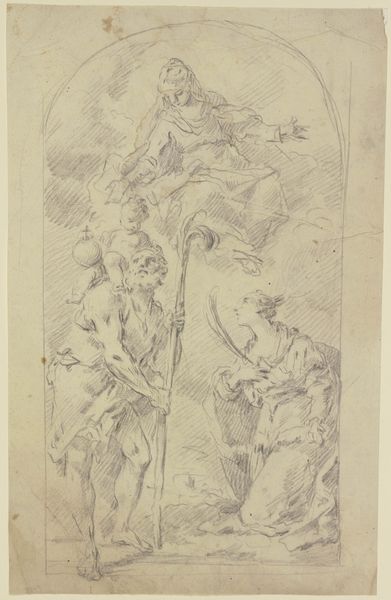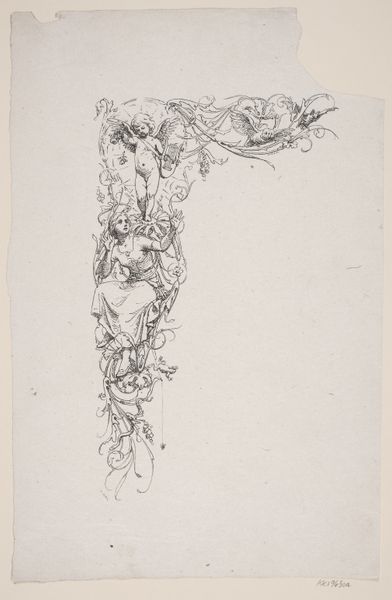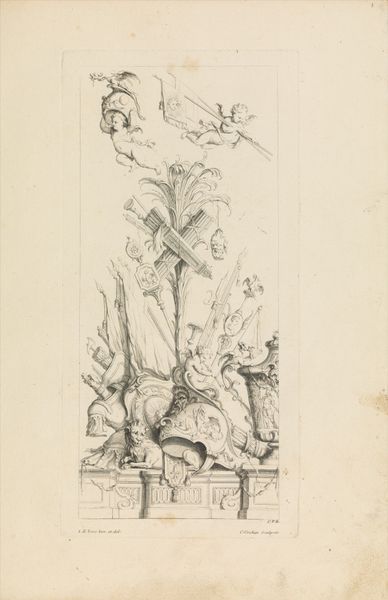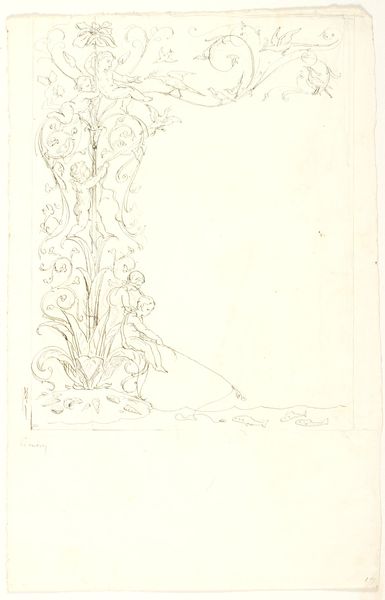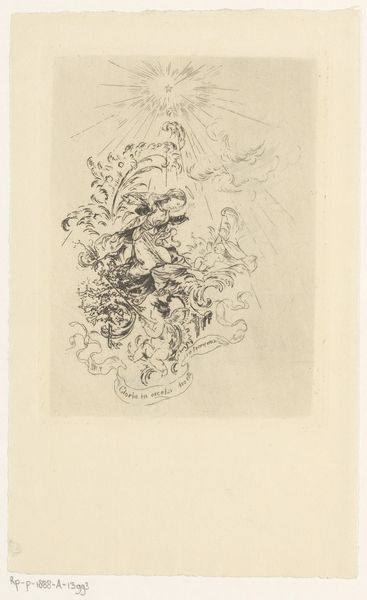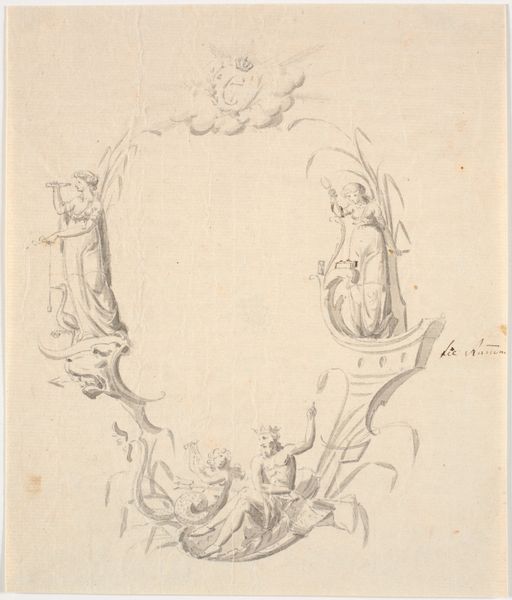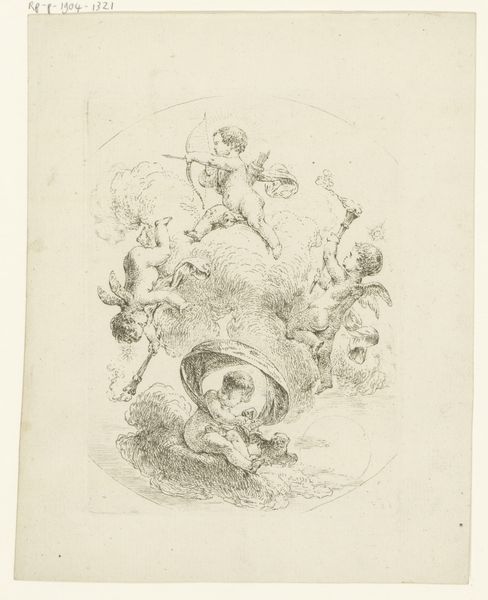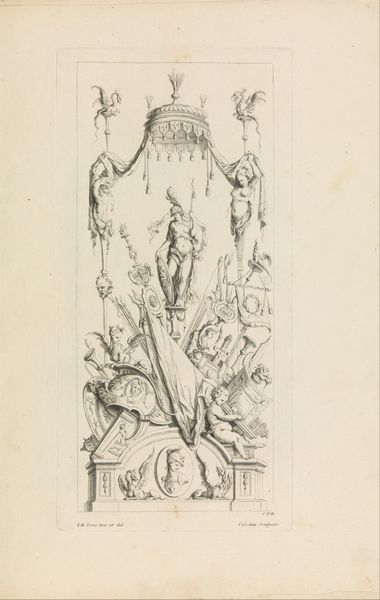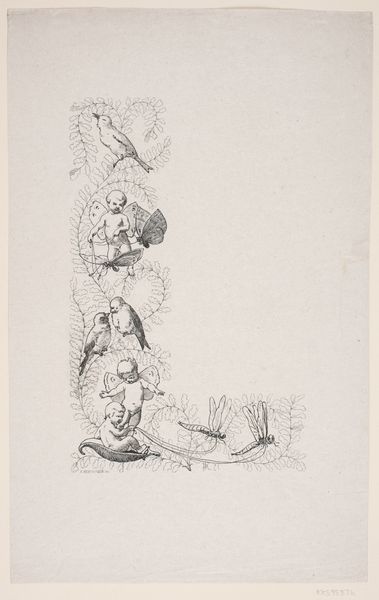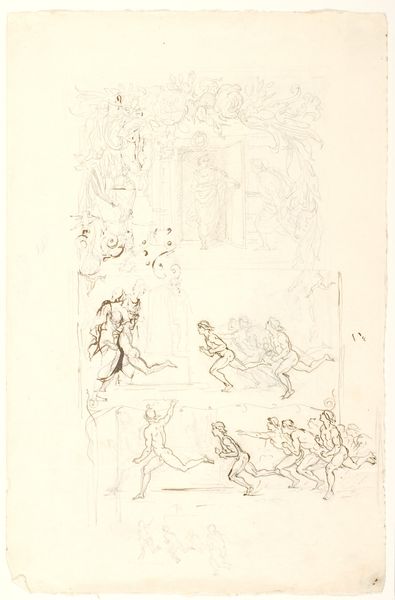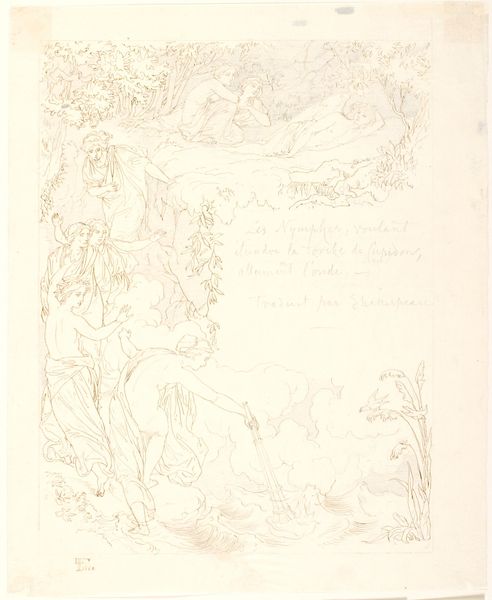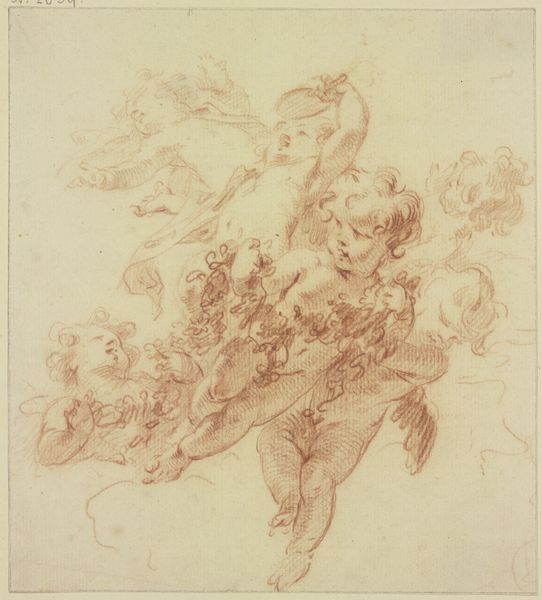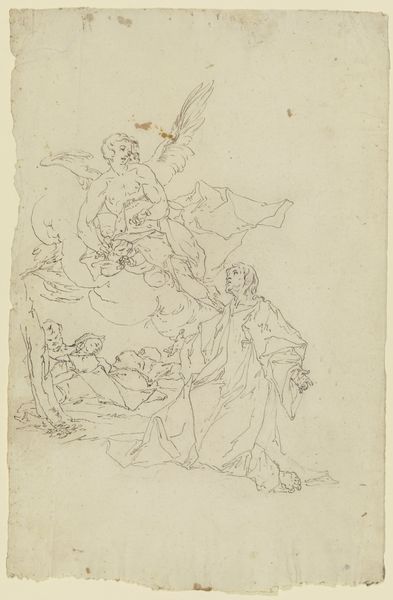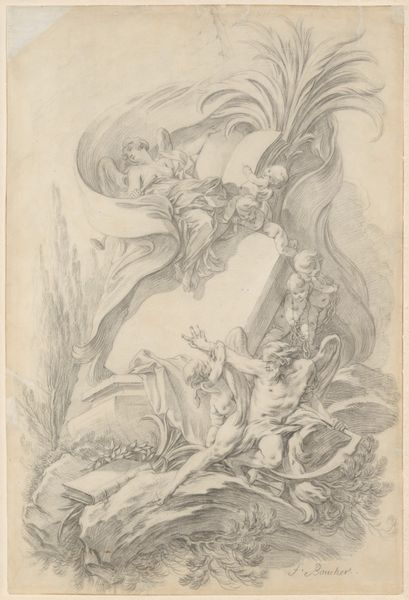
drawing, print, ink, pencil, pen
#
drawing
#
ink drawing
#
allegory
# print
#
pen sketch
#
etching
#
figuration
#
ink
#
pencil
#
pen
#
genre-painting
#
history-painting
Dimensions: 325 mm (height) x 246 mm (width) (bladmaal)
Editor: Here we have "Basaren for plejemødre. Randtegning til festprogrammet," or "The Bazaar for Foster Mothers. Marginal Drawing for the Festival Programme," made in 1884, using pen, pencil, and ink. The artist is unknown, and it has this delicate, almost ephemeral quality because of the light application of the materials. How do you interpret this drawing? Curator: Well, what immediately strikes me is not so much the subject matter, but the very material conditions of its production and intended consumption. It’s a preparatory sketch, likely for a mass-produced festival program. Who would be purchasing and consuming such programs, and what meanings were being constructed through that act of purchase and consumption? Editor: That's interesting! So, you’re thinking about it less as art and more as a kind of commodity? Curator: Exactly. These sketches weren't meant for a museum. The labor that goes into designing and producing them—from the initial concept to the printing process itself—reveals much about the economic and social context of 19th-century Denmark. It shows the connection between art production and capitalist structures, and what were these foster mothers doing, were they profiting from the children's need of care? Editor: I hadn't considered the economic side of it so much. It does make you wonder about who profited from this bazaar. Curator: Right. Think about the paper, the ink, the printing press itself—each component tells a story about industrialization and the distribution of goods, even seemingly benign things like sketches of cherubs. It wasn't meant to last forever, so that is another matter that affects its value. What do you think is the meaning behind this limited use of resources? Editor: Seeing it this way really changes my perspective! It shifts the focus from the artistic skill to the wider economic and social networks at play. Curator: Precisely. By focusing on the material, we move away from an appreciation centered on artistry, toward the cultural impact the work has had within these commercial exchanges.
Comments
No comments
Be the first to comment and join the conversation on the ultimate creative platform.
